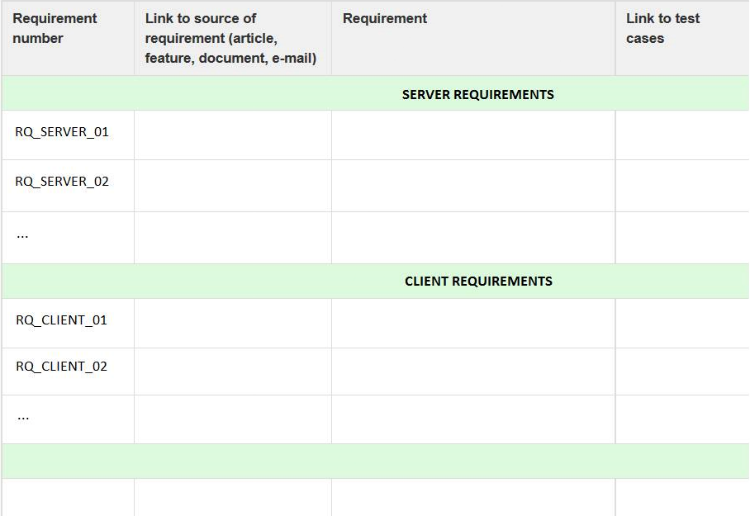So what is a Requirements Coverage Matrix and how can it be useful?

USA
Thank you for reaching out to Sigma Software!
Please fill the form below. Our team will contact you shortly.
Sigma Software has offices in multiple locations in Europe, Northern America, Asia, and Latin America.

USA

Sweden

Germany

Canada

Israel

Singapore

UAE

Australia

Austria

Ukraine

Poland

Argentina

Brazil

Bulgaria

Colombia

Czech Republic

Hungary

Mexico

Portugal

Romania

Uzbekistan
Collection and analysis of requirements to a product or to its single feature is an integral stage of any project. This article can be useful for those who repeatedly face the necessity of requirements coverage and preparation of test cases. I will tell you about the usage of Requirements Coverage Matrices and we’ll discuss key advantages of documenting requirements and possible formats of their storage.
It is worth mentioning that the use of Requirements Coverage Matrices and the choice of a storage format depend mainly on the nature of the project and its capacities.
The main conditions, which make usage of a Requirements Coverage Matrix on a project appropriate, are as follows:
Requirements Coverage Matrix is a table that contains a list of documented requirements to a product/task and links to the corresponding test scenarios. It is used for validation of requirements coverage with test cases. There may be situations where requirements are not initially documented or where initial requirements are not final and need an additional study together with the story team and agreement with the customer. In such cases, the matrix also serves as a collection and storage place for the final approved requirements.
Most sources suggest using a two-dimensional matrix, where column headers contain requirements, and row headers contain test scenarios. The intersections mark that the requirement of the current column is covered with the test scenario of the current row. Below you can see an example of this kind of matrix:

As practice has shown, this approach is not the only possible standard. Based on the needs and specifics of the project, you can choose a different, better-suited format. For example, one of Sigma Software’s projects used the following format of the Requirements Coverage Matrix:

In this case, we see that the matrix is a table with more data necessary for the given project, namely:
It is also worth adding that in the case given above the application was a client-server application, that is why the requirements in the table are divided into server requirements, back-office requirements, and client requirements. This approach added to the convenience of further work with the requirements (implementation, preparation of test cases). As for preparation of test cases, they employed (just like in the Requirements Coverage Matrix) some cross-references to the requirements corresponding to the given test cases.
Therefore, anyone, who has a completed Requirements Coverage Matrix like this, is not left wondering where a certain requirement comes from, or whether it is approved with the team and the customer, or whether it is covered with test cases. The table provides all the necessary information.
When choosing a format of storage for a Requirements Coverage Matrix, it is important to take into account not only the project specifics, but also the accessibility of the matrix for other team members and, possibly, the customer as well. The Matrix may be shaped into an article on one of the project resources, or stored as a separate Word or Excel document. There is also a number of professional products created specifically for the purpose of structuring, collecting, and analyzing requirements, such as Rational RequisitePro, Rational DOORS, Rational RequisitePro, and others.
In conclusion, it is worth highlighting the main advantages of using a Requirements Coverage Matrix (or matrices) on a project:
We’ll continue discussing Requirements Coverage Matrices in my next article. I’ll tell you about versioning of Requirements Coverage Matrices and choice of matrix storage formats. Stay tuned!

Zinaida is a proficient test engineer with almost 10 years of experience. She has participated in all stages of the software testing process from collection and analysis of requirements to test results verification.


On November 27, in Lviv, Forbes AI Summit brought together entrepreneurs, technology leaders, and scientists for an honest conversation about how AI is reshapin...

The EU Data Act went live in September 2025. Its rollout across Europe has been uneven, with only a few member states having completed the national set-ups. Nev...

For years, manufacturers have been talking about the advantages of shifting to outcome-based business models. The rise of AI has made the opportunity for transf...
Would you like to view the site in German?
Switch to German